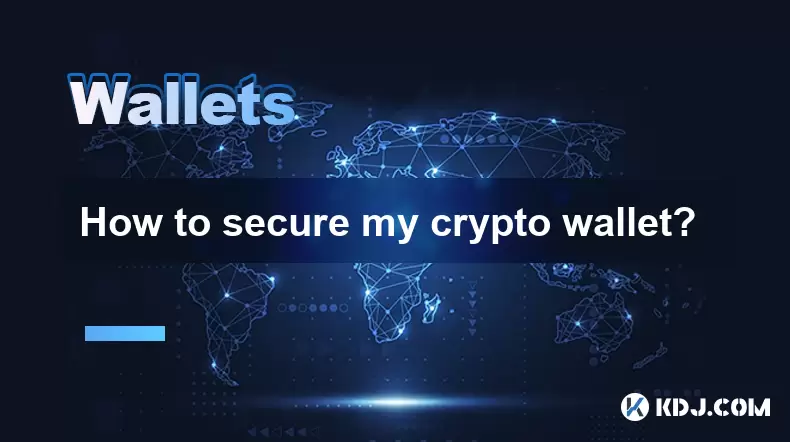-
 Bitcoin
Bitcoin $107,618.5142
0.12% -
 Ethereum
Ethereum $2,512.1843
3.14% -
 Tether USDt
Tether USDt $1.0002
0.00% -
 XRP
XRP $2.2947
5.02% -
 BNB
BNB $659.4274
1.65% -
 Solana
Solana $157.2227
4.00% -
 USDC
USDC $0.9999
0.00% -
 TRON
TRON $0.2799
1.47% -
 Dogecoin
Dogecoin $0.1672
1.83% -
 Cardano
Cardano $0.5843
4.56% -
 Hyperliquid
Hyperliquid $40.9315
7.47% -
 Bitcoin Cash
Bitcoin Cash $515.7593
5.04% -
 Sui
Sui $2.8141
0.66% -
 Chainlink
Chainlink $13.6128
2.03% -
 UNUS SED LEO
UNUS SED LEO $9.1190
0.81% -
 Avalanche
Avalanche $18.1610
0.63% -
 Stellar
Stellar $0.2405
2.09% -
 Toncoin
Toncoin $2.9537
2.61% -
 Shiba Inu
Shiba Inu $0.0...01157
0.32% -
 Litecoin
Litecoin $86.7711
0.11% -
 Hedera
Hedera $0.1520
2.24% -
 Monero
Monero $319.9130
2.90% -
 Polkadot
Polkadot $3.4451
0.54% -
 Dai
Dai $1.0000
0.01% -
 Bitget Token
Bitget Token $4.5506
-1.01% -
 Ethena USDe
Ethena USDe $1.0001
-0.01% -
 Uniswap
Uniswap $7.2587
0.73% -
 Aave
Aave $282.7954
3.27% -
 Pepe
Pepe $0.0...09926
2.91% -
 Pi
Pi $0.5128
-2.62%
How to enable biometric unlocking in Trust Wallet?
Trust Wallet enhances security with biometric authentication, allowing users to access their wallet using fingerprint or facial recognition on iOS and Android devices.
Apr 04, 2025 at 07:49 pm

Trust Wallet, a popular mobile cryptocurrency wallet, offers the convenience of biometric authentication for enhanced security. This feature allows users to access their wallet using their fingerprint or facial recognition, instead of relying solely on a passcode. This article will guide you through the process of enabling this feature, addressing potential issues and FAQs.
Enabling Biometric Authentication on Trust Wallet
Enabling biometric unlocking in Trust Wallet is a straightforward process, but it requires the correct settings to be activated. The process differs slightly depending on your device's operating system (iOS or Android).
For iOS Devices:
- Open your Trust Wallet app.
- Navigate to the "Settings" menu. This is usually represented by a gear icon.
- Look for the "Security" section.
- Find the "Biometric Authentication" option (it might be labeled "Fingerprint" or "Face ID").
- Tap the toggle switch to enable the feature.
- You will be prompted to authenticate using your device's registered biometric method (Touch ID or Face ID).
- Once verified, biometric authentication is enabled for your Trust Wallet.
For Android Devices:
- Open your Trust Wallet application.
- Go to the "Settings" menu (usually a gear icon).
- Locate the "Security" section.
- Find the "Biometric Authentication" or similar option. The exact wording may vary slightly.
- Tap the toggle switch to activate the feature.
- Your device will prompt you to authenticate using your registered biometric method (fingerprint scanner).
- After successful verification, your Trust Wallet will be protected by your biometric data.
Troubleshooting Biometric Authentication Issues
Sometimes, enabling or using biometric authentication can encounter problems. Here are some common issues and their solutions:
Biometric Authentication Unavailable: This could be due to your device not supporting biometric authentication, or the feature not being enabled in your device's system settings. Ensure biometric authentication is enabled in your phone's general settings.
Biometric Authentication Not Working: Try restarting your phone. Ensure your finger/face is properly registered and clean. If the issue persists, try disabling and re-enabling the feature in Trust Wallet.
Frequent Biometric Authentication Prompts: This is usually due to a security setting within Trust Wallet. Check the settings to see if the timeout period for biometric authentication can be adjusted. A shorter timeout will result in more frequent prompts.
Incorrect Biometric Data: If you've recently changed your fingerprint or are using a different finger, you may need to re-register your biometric data with your device. Consult your device's manual for instructions on re-registering your biometric data.
App Update Conflicts: Sometimes, a recent app update might cause conflicts. Try updating Trust Wallet to the latest version. If the problem continues, consider uninstalling and reinstalling the app.
Understanding the Security Implications of Biometric Unlocking
While convenient, biometric authentication isn't foolproof. It's crucial to understand its limitations.
Vulnerability to Spoofing: Although advanced, biometric systems can be vulnerable to sophisticated spoofing attempts. Using a strong passcode as a secondary layer of security is strongly recommended.
Device Security: The security of your biometric authentication relies heavily on the security of your device. Keep your device's operating system updated and avoid jailbreaking or rooting.
Data Privacy: Your biometric data is stored and processed by your device's operating system, not Trust Wallet. Review your device's privacy settings to understand how your biometric data is handled.
Additional Security Measures
Biometric unlocking should be considered a supplementary security measure, not a replacement for other security best practices.
- Strong Passcode: Always set a strong, unique passcode for your Trust Wallet.
- Two-Factor Authentication (2FA): Enable 2FA whenever possible for an extra layer of protection.
- Regular Software Updates: Keep your Trust Wallet app and your device's operating system updated to benefit from the latest security patches.
- Beware of Phishing: Be cautious of suspicious emails, websites, or apps that might attempt to steal your credentials.
Frequently Asked Questions (FAQs)
Q: What happens if I forget my biometric data?
A: If you forget your biometric data (fingerprint or facial recognition), you will need to use your backup passcode to access your wallet. If you've forgotten your passcode as well, recovering your wallet might be challenging, depending on the recovery options you set up.
Q: Can I use biometric authentication with all my wallets in Trust Wallet?
A: Yes, biometric authentication applies to all your wallets within the Trust Wallet app, providing a consistent level of security across all your crypto assets.
Q: Is biometric authentication more secure than a passcode?
A: Biometric authentication offers added convenience, but it's not inherently more secure than a strong, unique passcode. A combination of both is generally recommended for optimal security.
Q: What should I do if my biometric authentication stops working after a device update?
A: After a device update, you might need to re-register your biometric data with your device or re-enable the biometric authentication feature within the Trust Wallet app. Restarting your device can also resolve this issue.
Q: My biometric scanner is malfunctioning. Can I still use Trust Wallet?
A: Yes, you can still access your Trust Wallet by using your backup passcode. However, it's advisable to address the malfunctioning biometric scanner as soon as possible.
Q: Is my biometric data stored on Trust Wallet's servers?
A: No, your biometric data is stored and processed by your device's operating system, not by Trust Wallet. Trust Wallet doesn't have access to this information.
Disclaimer:info@kdj.com
The information provided is not trading advice. kdj.com does not assume any responsibility for any investments made based on the information provided in this article. Cryptocurrencies are highly volatile and it is highly recommended that you invest with caution after thorough research!
If you believe that the content used on this website infringes your copyright, please contact us immediately (info@kdj.com) and we will delete it promptly.
- OKX and Binance Delist Trading Pairs: What's Going On?
- 2025-07-01 02:30:12
- Pepeto vs. Shiba Inu: Can the New Meme Coin Dethrone the King?
- 2025-07-01 02:50:11
- Meme Coin Mania: Pepeto, Pepe, and Shiba Inu Race to Dominate July 2025
- 2025-07-01 03:50:12
- Saylor, Bitcoin, Holdings: Strategy's Crypto Empire Grows
- 2025-07-01 02:30:12
- Ruvi AI: The Audited Token Set to Outshine Shiba Inu?
- 2025-07-01 03:55:12
- BONK's Double Bottom Dance: Will Critical Support Hold?
- 2025-07-01 04:00:22
Related knowledge

What is a private key vs public key?
Jul 01,2025 at 04:21am
Understanding the Basics of Cryptographic KeysIn the world of cryptocurrencies, the terms private key and public key are foundational. These keys form the backbone of blockchain security and ensure that digital assets remain protected while allowing for transparent transactions. At their core, these keys are part of a cryptographic system known as asymm...

What is the best crypto wallet for beginners?
Jul 01,2025 at 02:42am
Understanding the Basics of Crypto WalletsA crypto wallet is a digital tool that allows users to store, send, and receive cryptocurrencies securely. Unlike traditional wallets that hold physical cash, crypto wallets do not actually store coins. Instead, they manage the private keys that grant access to blockchain addresses where your funds are recorded....

How to secure my crypto wallet?
Jul 01,2025 at 03:28am
Understanding the Importance of Crypto Wallet SecuritySecuring your crypto wallet is a fundamental aspect of managing digital assets. Unlike traditional bank accounts, cryptocurrency wallets do not have centralized institutions to reverse fraudulent transactions or recover lost funds. Therefore, security measures must be proactively managed by the user....

Coinbase price alert settings: real-time monitoring of market fluctuations
Jun 29,2025 at 07:00am
Setting Up Coinbase Price AlertsTo begin real-time monitoring of market fluctuations on Coinbase, users can utilize the built-in price alert feature. This function allows you to receive notifications when a cryptocurrency reaches a specific price point. To access this setting, open the Coinbase app or log in via the web platform. Navigate to the 'Prices...

How to stake cryptocurrencies on Coinbase? Benefits and risks
Jun 27,2025 at 06:36pm
Understanding Cryptocurrency Staking on CoinbaseStaking cryptocurrencies involves locking up digital assets to support the operations of a blockchain network, typically in return for rewards. Coinbase, one of the most popular cryptocurrency exchanges globally, offers staking services for several proof-of-stake (PoS) coins. Users can stake their holdings...

Differences between Coinbase Pro and Coinbase: platform function comparison and analysis
Jun 29,2025 at 08:21am
Overview of Coinbase and Coinbase ProWhen exploring the cryptocurrency trading landscape, users often encounter two platforms under the same parent company: Coinbase and Coinbase Pro. While both are operated by the same organization, they cater to different types of users and offer varying features. Coinbase is primarily designed for beginners and casua...

What is a private key vs public key?
Jul 01,2025 at 04:21am
Understanding the Basics of Cryptographic KeysIn the world of cryptocurrencies, the terms private key and public key are foundational. These keys form the backbone of blockchain security and ensure that digital assets remain protected while allowing for transparent transactions. At their core, these keys are part of a cryptographic system known as asymm...

What is the best crypto wallet for beginners?
Jul 01,2025 at 02:42am
Understanding the Basics of Crypto WalletsA crypto wallet is a digital tool that allows users to store, send, and receive cryptocurrencies securely. Unlike traditional wallets that hold physical cash, crypto wallets do not actually store coins. Instead, they manage the private keys that grant access to blockchain addresses where your funds are recorded....

How to secure my crypto wallet?
Jul 01,2025 at 03:28am
Understanding the Importance of Crypto Wallet SecuritySecuring your crypto wallet is a fundamental aspect of managing digital assets. Unlike traditional bank accounts, cryptocurrency wallets do not have centralized institutions to reverse fraudulent transactions or recover lost funds. Therefore, security measures must be proactively managed by the user....

Coinbase price alert settings: real-time monitoring of market fluctuations
Jun 29,2025 at 07:00am
Setting Up Coinbase Price AlertsTo begin real-time monitoring of market fluctuations on Coinbase, users can utilize the built-in price alert feature. This function allows you to receive notifications when a cryptocurrency reaches a specific price point. To access this setting, open the Coinbase app or log in via the web platform. Navigate to the 'Prices...

How to stake cryptocurrencies on Coinbase? Benefits and risks
Jun 27,2025 at 06:36pm
Understanding Cryptocurrency Staking on CoinbaseStaking cryptocurrencies involves locking up digital assets to support the operations of a blockchain network, typically in return for rewards. Coinbase, one of the most popular cryptocurrency exchanges globally, offers staking services for several proof-of-stake (PoS) coins. Users can stake their holdings...

Differences between Coinbase Pro and Coinbase: platform function comparison and analysis
Jun 29,2025 at 08:21am
Overview of Coinbase and Coinbase ProWhen exploring the cryptocurrency trading landscape, users often encounter two platforms under the same parent company: Coinbase and Coinbase Pro. While both are operated by the same organization, they cater to different types of users and offer varying features. Coinbase is primarily designed for beginners and casua...
See all articles

























































































